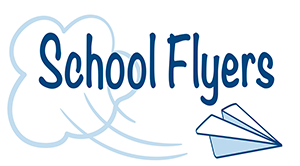Dear Churchill Patrons,
I wanted to take a quick moment and express that the school year is off to an amazing start and your student is in great hands. Churchill is an outstanding place and the faculty and staff work incredibly hard to ensure your students’ safety, academic success and emotional wellbeing. Knowing how we are achieving this is critical to our relationship with you as parents and guardians. Please read below for details:
Student Safety
Student safety is number one. The school utilizes an emergency committee that reviews and refines best practices and trains staff and students for emergency safety. We have already had one unplanned alarm go off and a shelter in place, in both cases the staff and students did exactly as expected. Safety also means students knowing procedures and routines to ensure we respect each other physically and mentally. The school does a once a quarter assembly and daily or weekly procedural reminders. Students are also taught in advisory lessons and other areas how to report when they or friends are feeling disrespected or unsafe. Communication with your student is vital and connecting with the school to ensure a net of support at both home and school is the best practice. Please contact the school anytime and be aware of and train your students about our SafeUT app for anonymous reporting.
Academic success and Proficiency-based Grading

Proficiency-based grading (PBG) at its core allows a stronger focus on visible learning and individual growth. Standards are assessed and scores are given to students based on assessments to help teachers know what each student has learned. John Hattie, a leader in educational research, reports that visible student learning has one of the strongest positive effects on learning outcomes. Proficiency-based grading is a way to ensure that teachers provide specific feedback to parents and students on what students are learning in each standard for each subject or course creating a system where student learning is more visible. Two proficiency-based grading items that seem to have come up often is concern about knowing how your students are doing and ensuring students are challenged or pushed to their maximum potential.
First, Parents will see on gradebook, via the parent portal under standards, the assessments and scores for each of your students’ classes. For each assessment, students are given a proficiency score represented as a 1-4—a 3 is proficient meaning the student has reached the level of understanding that signifies that they have reached the standard, they have learned what they need to learn in that standard; a 2 is approaching proficient which means that the student has some areas in the standard where they have not reached the level of learning expected to reach that standard; a 1 is below proficiency which means that the student learning is only seen with significant help from the teacher or other sources, they are not reaching the standard; and a 4 is highly proficient which means the student is showing learning that is above what is needed to reach the standard. Individual assessment scores are visible in gradebook in the standards section as soon as the assessment score is entered; however, an overall proficiency score for a standard will not show in gradebook until three assessments have been entered for that standard. Likewise, no overall grade or proficiency will be given for the course until at least one standard has three assessments graded. Most teachers are also utilizing Canvas to keep parents apprised of what is going on in class and the work your student is doing. Canvas is a great place to find files, assessment and practice descriptions, practice completion, and information for each course. Gradebook will have the current grade and assessment scores for each course.
Second, students and teachers work hard to have students reach a level 3; remember, a 3 means that the student has mastered that standard. Percentages are no longer part of this grading system and a 3 means proficiency/mastery not “average.” Scores should not be seen as a 3 out of 4 rather, they should be seen as a level of proficiency. Teachers are teaching what is needed to master proficiency in each standard (to receive a 3); however, there are always opportunities to go beyond mastery of a standard. Students can choose to shoot for a 4 (highly proficient) meaning they are applying, digging deeper, and showing more complexity in their learning mastery of the standard. This does not mean an extra assignment but does mean going above expectations and applying the standard in a more complex way than is required of the standard. Proficiency scales and rubrics are provided to give students a clear understanding of how to achieve a 4 on specific standards. We have resources for parents and students on our website under the tab proficiency-based grading (PBG); this tab will continue to grow with resources throughout the year to help our whole community better understand proficiency-based grading.
I could not be prouder to work in such a fine community. I assure you we care about your students’ success. Please never hesitate to reach out should you need us.












You must be logged in to post a comment.